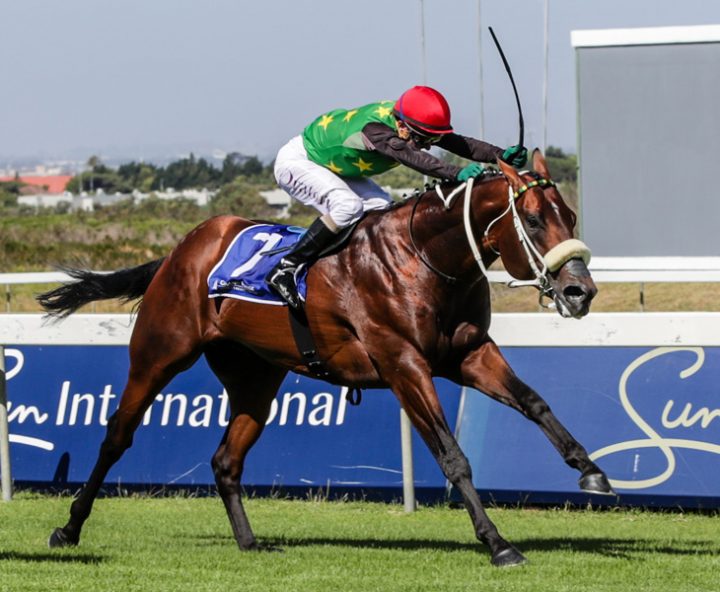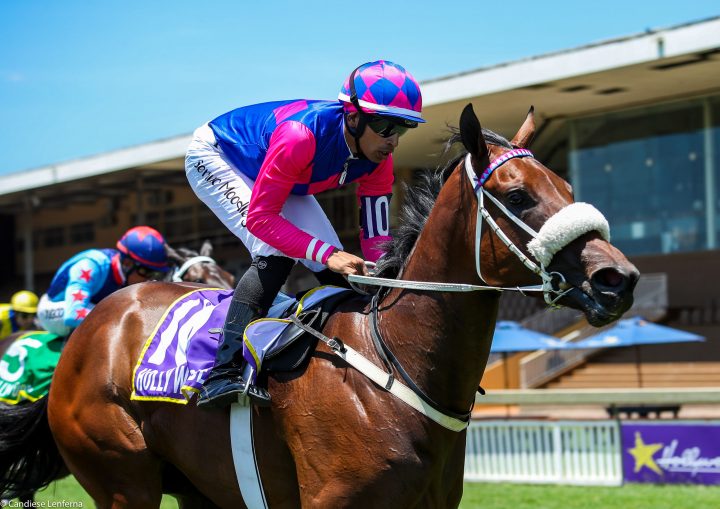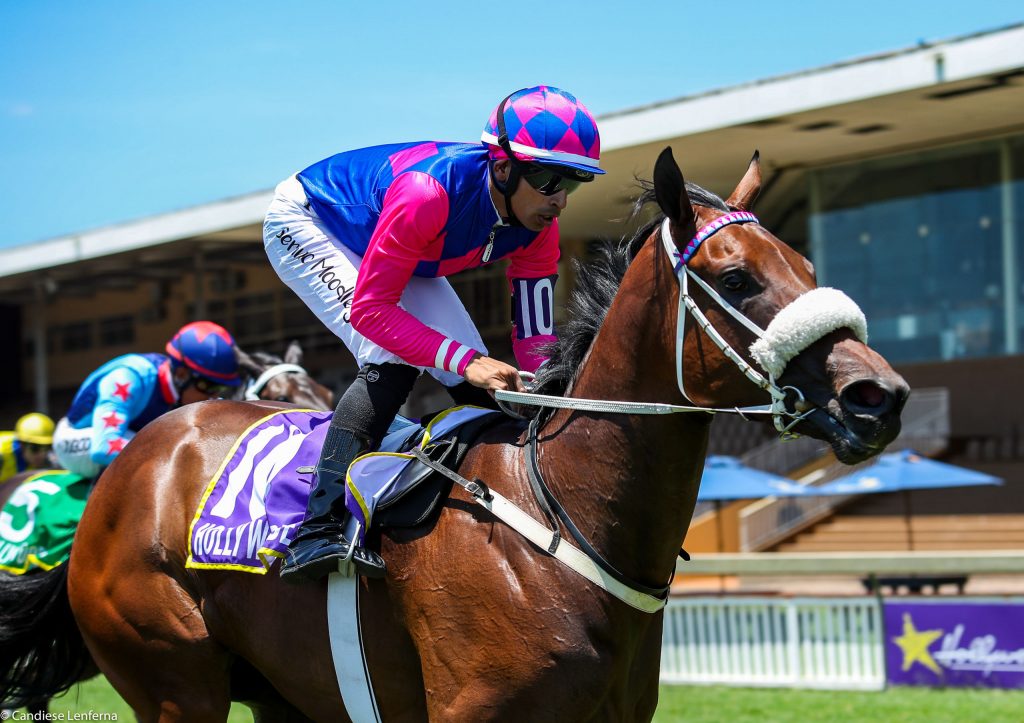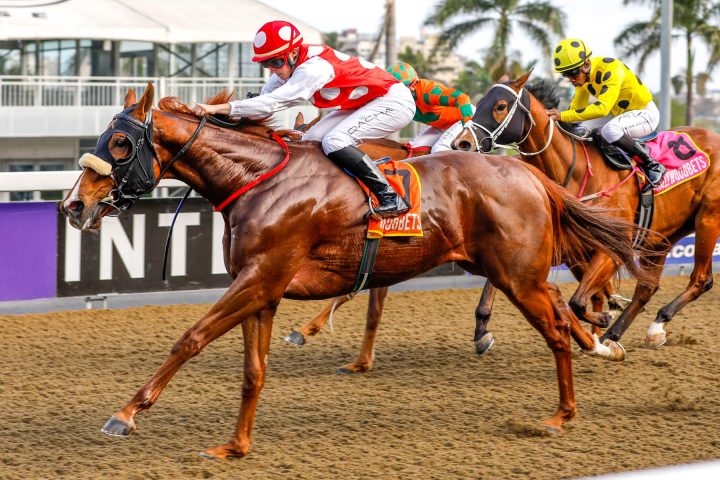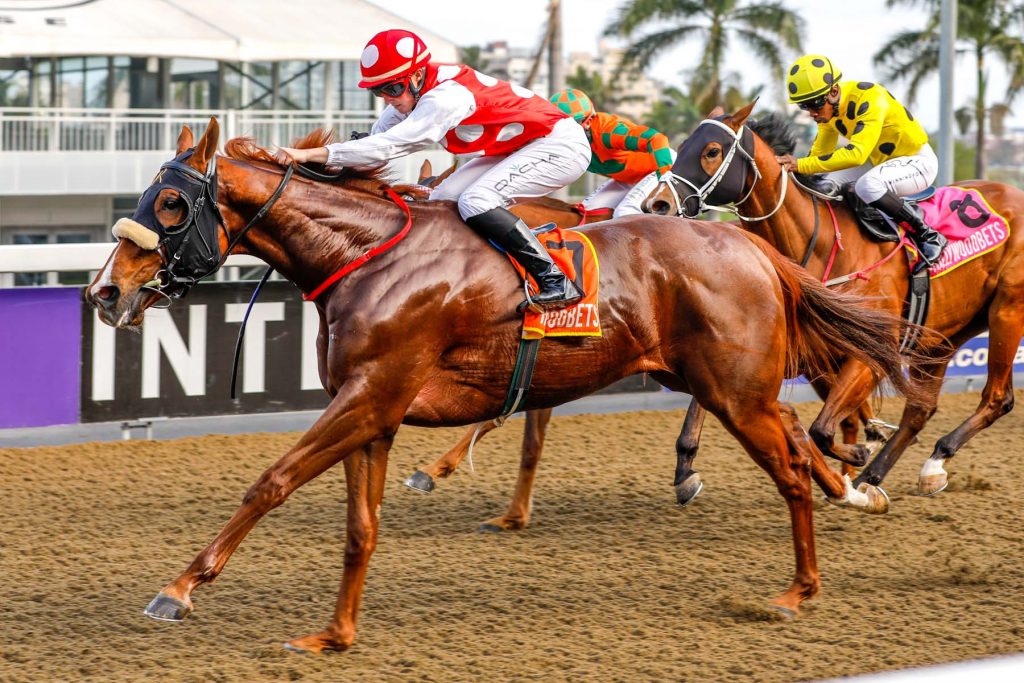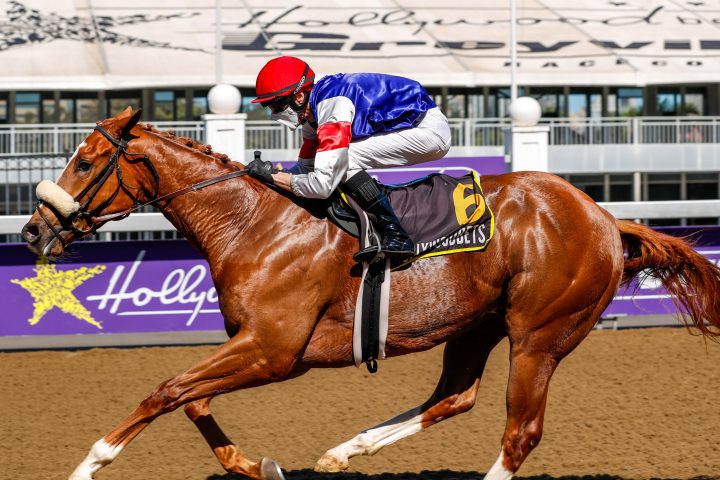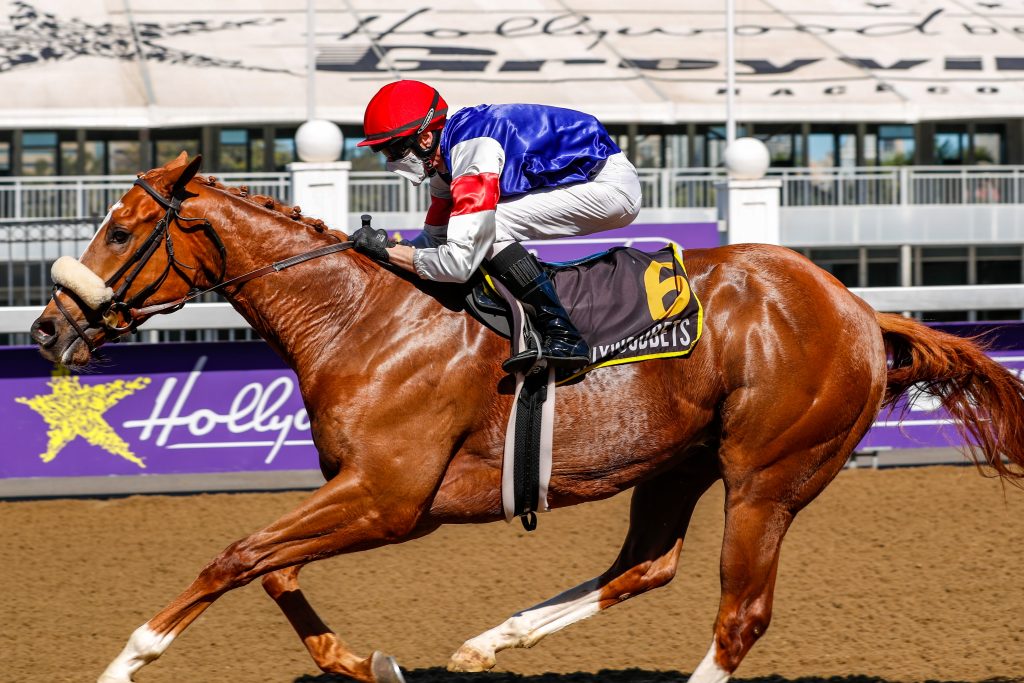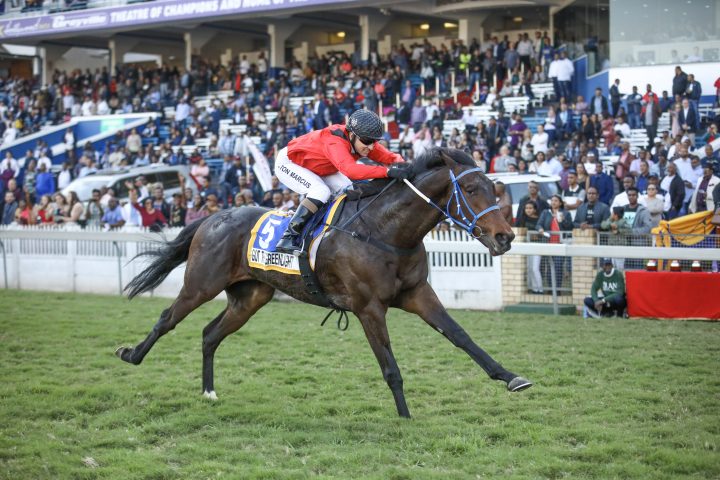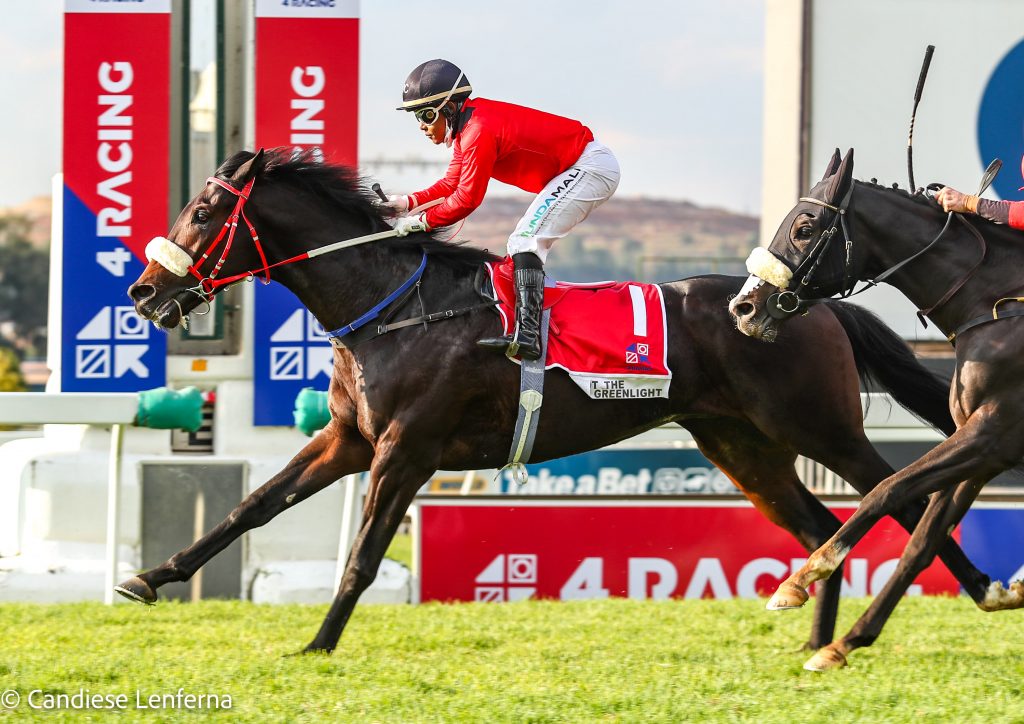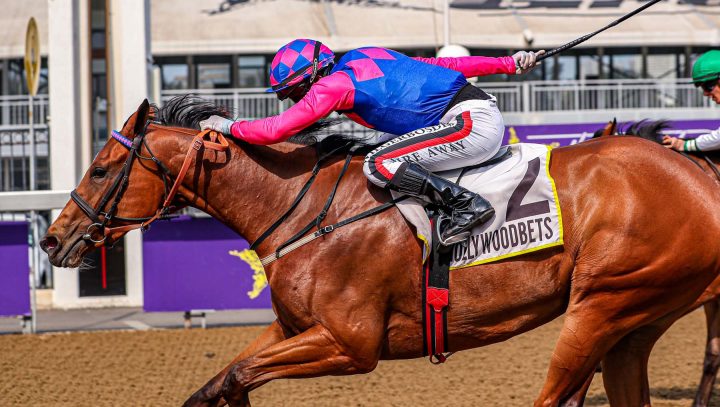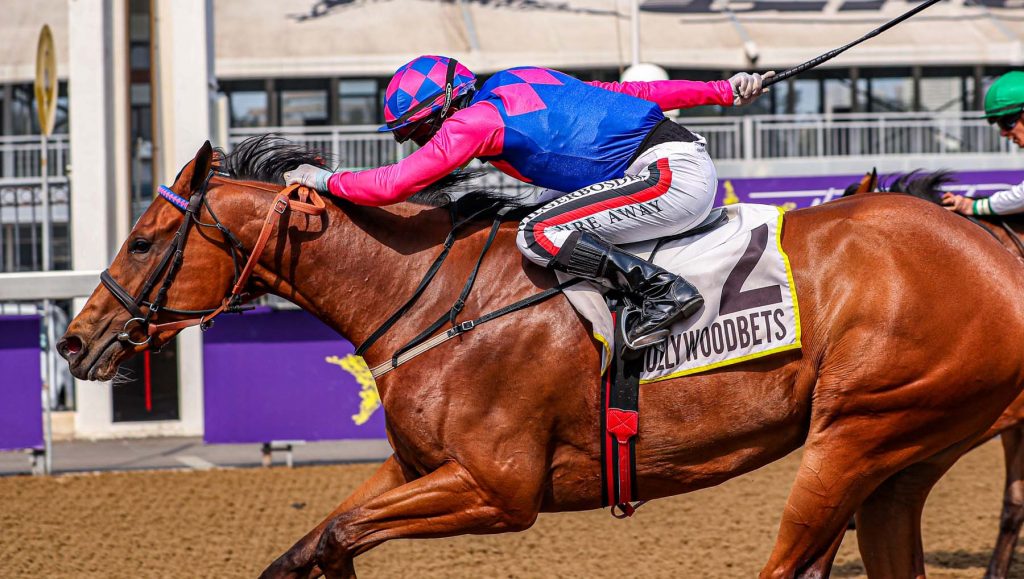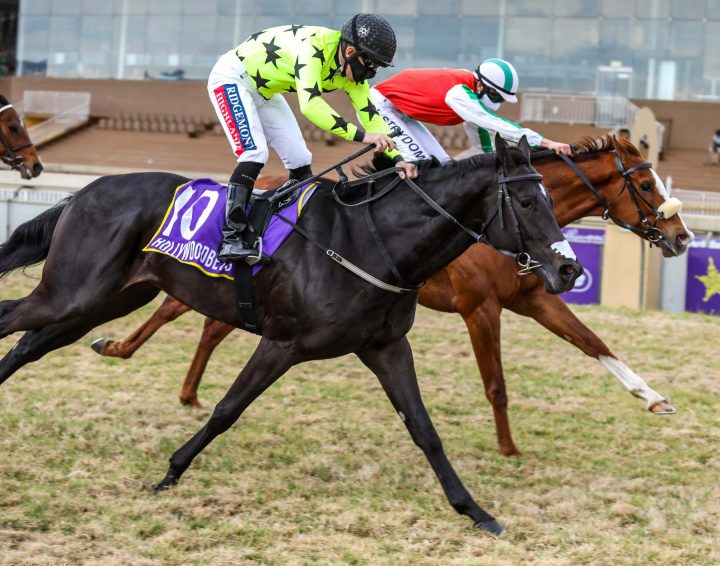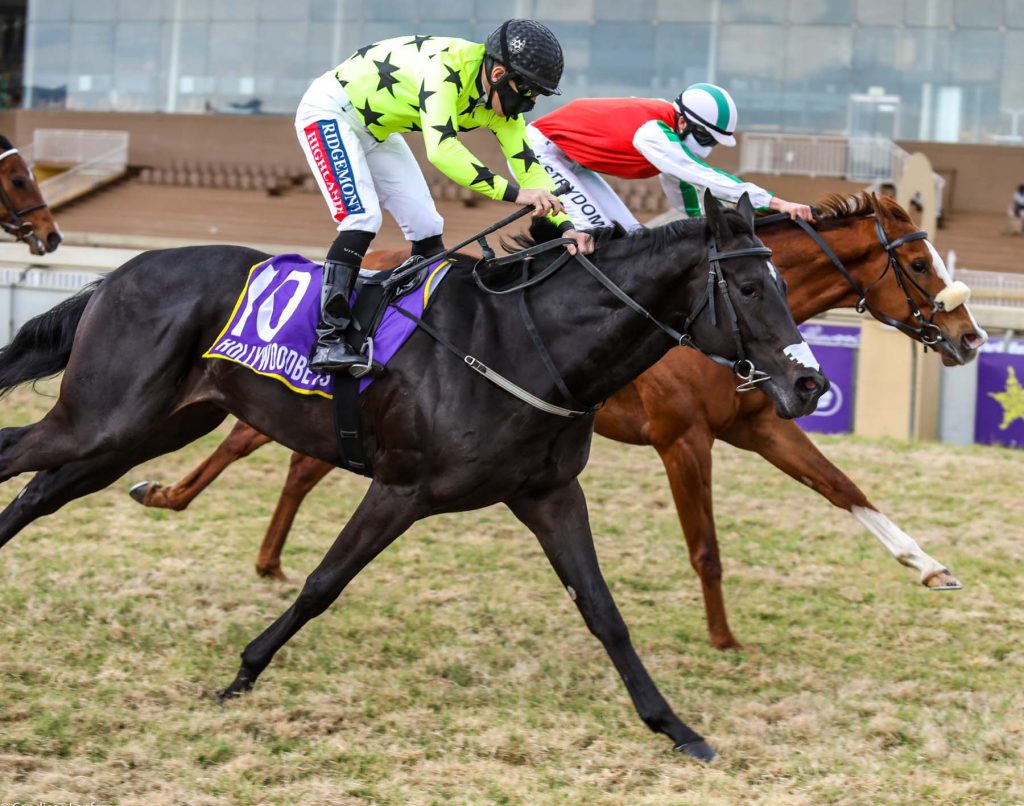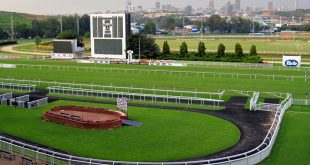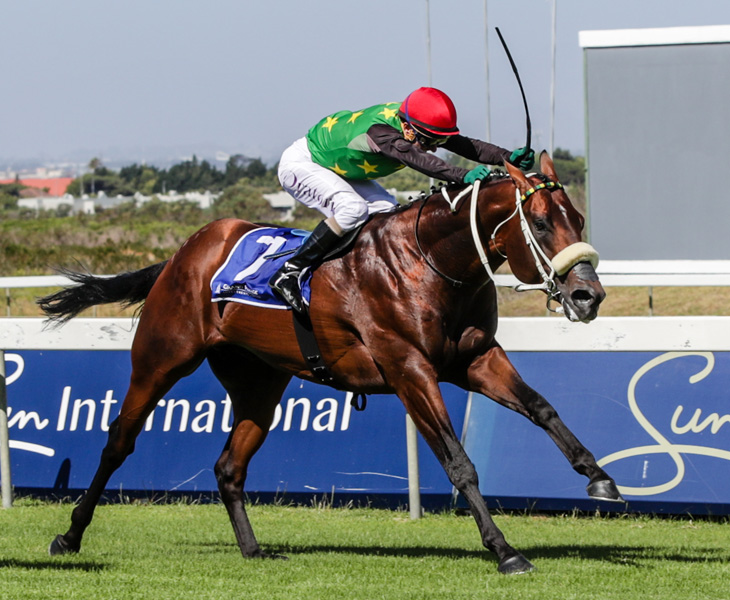
David Thiselton
KZN Champion Owners the Hollywood Syndicate have some interestingly named horses and Hollywoodbets’ Brand and Communications Manager Devin Heffer explained there is real purpose behind these names.
A recent example is the Dean Kannemeyer-trained William Longsword colt Khuluma Nathi, who has been discussed at length during the morning show on East Coast Radio (ECR), and the video and commentary of his debut were also downloaded on to the ECR website.
ECR are not part of the Hollywood Syndicate but are a Hollywoodbets business partner and Khulumu Nathi was named in recognition of presenter Sky Tshabalala’s live on-the-air Zulu lessons.
ECR thus have an attachment to the horse and view him as their own.
Consequently, they are are not only following his career but sharing the experience with thousands of listeners.
Devin said, “We love to name our horses after our business partners and sponsored entities. We want people to resonate with them. The Khulumu Nathi segment Sky hosted on the morning show really brought KZN together and bridged the gap between cultures so we thought what a beautiful name for a horse.”
He continued, “Hollywoodbets Dolphins Players can identify with ‘Kingsmead Krystal’ named after their bubbly staff member and we have also included our own staff in naming horses, for example Bhakka, who has recently won three races at Fairview, is named after our long-time tipster Peter Barker and Imbejeje was named by our jovial housekeeping team (a fun name referring to “love handles”).”
However, the concept does not end with the names. The relevant business partner or Hollywoodbets department associated with the horse are then exposed to every aspect of the sport. They are taken to Summerveld or Randjesfontein where they first enjoy breakfast in the clubhouse before visiting both the training rings and the stables where they can get close to the horses, including their “own” horse, and can speak to the trainers and jockeys. They are also taken to the parade ring on racedays. These groups thus get an overall horseracing experience that is usually reserved for owners and they become genuinely attached to “their” horse. This has a knock on effect when they share the experience with family and friends.
Heffer said, “People who have never been
exposed to the sport are thus sitting up and saying ‘wow, this looks like an
interesting and fun sport’, so it is generating interest and might hopefully
lead to a buy in. Even if just one of them buys a horse the experience will
reach all of their family and friends, so the knock on effect is potentially
great.”
The concept works two ways as jockeys, trainers and owners are also getting to meet sporting legends like Springbok captain Siya Kholisi.
The naming drive, and knock on effect, is thus in line with another of Hollywoodbets’ goals of uniting various mainstream sports like football, rugby, cricket, netball and horseracing which will increase the support they currently each have.
Heffer pointed out that commentators and presenters are never left guessing but are instead contacted and not only taught the correct pronunciation of the names, but also the meaning behind them. He praised commentators Craig and Sheldon Peters and Alistair Cohen as well as the Gold Circle TV and Tellytrack presenters for buying in to the concept.
Imilenzeyokududuma, for example, is named after Hollywoodbets brand ambassador, Jerry Sikhosana, an Orlando Pirates legend who scored the winning goal in the 1995 African Cup of Champions Clubs Final. Sikhosana’s nickname during his playing career was “Legs Of Thunder”, but Hollywoodbets felt the Xhosa translation “Imilenzeyokududuma” would have more impact.
Heffer explained, “Not enough has been done to expose blacks to horseracing and giving a horse a Xhosa name could ignite interest among a community who generally know little about the sport.”
Ironically, Sikhosana was nicknamed after a racehorse called “Legs Of Thunder” who featured in a 1990’s TV program. The nickname was coined by the late football journalist Sibusiso Mseleku due to Sikhosana’s running action which resembled a galloping horse.
The
Duncan Howells-trained Spydas Corner is named after another Hollywoodbets
football-famous brand ambassador, the Kaizer Chiefs and Bafana Bafana
goalkeeping legend Brian Baloyi, who was nicknamed “Spiderman”.
Hollywoodbets asked brand ambassador Odwa Ndungane, a stalwart winger for the Sharks rugby team, for name ideas and stuck with his suggestion of “Isivunguvungu” which is the Zulu word for “storm”. Odwa said the name given to a Muscutt-trained gelding related to the feeling he had when running on to a rugby field.
Brand Ambassador and cricketing legend Mike Procter named the Muscutt-trained Might Mashona. Procter played for Rhodesia (Zimbabwe) in the Currie Cup while living in Mashonaland from 1970 to 1976 and during this spell he not only joined Sir Donald Bradman and CB Fry as one of the only players in history to record six successive first class centuries but he also recorded his best bowling figures of 9 for 71.
Some of the names might be a mouthful but promoting horseracing is the purpose behind them.

